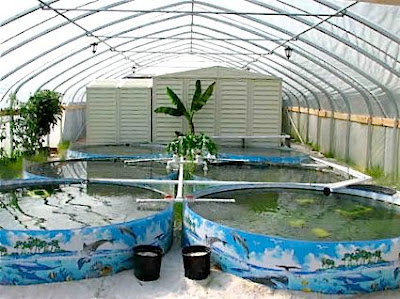A mushroom farming business can be a mean of big profit in just a few weeks with considerably low start up capital investment to start a business. A person who has a little bit of idea in the science & technology of mushroom growing and has an own building for having the farm – mushroom business will be the perfect option for him to start. The cultivation of mushroom is an art and requires both study and experience.
Mushroom Farming Expertise
An individual who has worked before on a mushroom farm can start his own mushroom farming business. Otherwise, it is always better to have a technical training on mushroom farming to gain expertise. You can contact ICAR- Directorate of Mushroom research for specific training for mushroom farming at their website www.nrcmushroom.org
 Mushroom Farming Business Plan
Mushroom Farming Business Plan
Starting a small business like mushroom farming requires some specific business plan. Work out a detailed budget; write out a clear strategy and objectives of your business, what will be the variety you want to grow and what will be your target market like domestic or export.
Choose Variety For Mushroom Farming
Different types of mushroom have different production cost and it is important to decide on a budget depending on the amount of money available and the long term investment benefit. A good variety to start mushroom farming with is the Oyster mushroom. Other profitable and easy to grow varieties are Shiitake, Lions Mane, White Button and Portobello.
Environment For Mushroom Farming
In mushroom farming business consider the environment for mushroom production. Different varieties require a different kind of environment. For example, the oyster mushroom has some basic environment requirement like temperature of 15 to 20°c, humidity of 80 to 90%, good ventilation, light and sanitation.
Get Spawn For Mushroom Farming
You will need to have spawns to start the culture. You can produce your own spawn by using a sterile culture or you can by ready-to-inoculate spawns form the suppliers. Producing spawns can be cheaper in the long run, because the startup cost will be high in this case.
Prepare Substrate For Mushroom Farming
 Mushroom can be cultivated on a large number of agro-waste having cellulose and lignin that helps in more enzyme production of cellulose that is correlated with more yield. You can use straw of paddy, wheat and ragi, stalk and leaves of maize millets and cotton, sugarcane bagasse, saw dust, jute and cotton waste, dried grasses, used tea leaf waste, etc. you can also use some industrial waste like paper mill sludge, coffee byproducts, tobacco waste etc. Some of the popular method of substrate preparation is steam pasteurization, hot water treatment, fermentation of composting and chemical sterilization.
Mushroom can be cultivated on a large number of agro-waste having cellulose and lignin that helps in more enzyme production of cellulose that is correlated with more yield. You can use straw of paddy, wheat and ragi, stalk and leaves of maize millets and cotton, sugarcane bagasse, saw dust, jute and cotton waste, dried grasses, used tea leaf waste, etc. you can also use some industrial waste like paper mill sludge, coffee byproducts, tobacco waste etc. Some of the popular method of substrate preparation is steam pasteurization, hot water treatment, fermentation of composting and chemical sterilization.
Some of the popular method of substrate preparation is steam pasteurization, hot water treatment, fermentation of composting and chemical sterilization.
Pack the Bags/ Boxes/ Trays For Mushroom Farming
The bag making process normally involves composting the substrate, filling the bags with composted material, spawning and then incubation till maturity stage.
Incubation For Mushroom Farming
Arrange the spawned bags/ boxes/ trays in a dark cropping room on raised platform concentrate to stop any threats any natural light getting into the room. Keep the growing area at specific temperature that depends on the variety.
Fruiting In Mushroom Farming
While various species require different temperature regimes all require high humidity 70-80% during fruiting. Frequent spraying of water is necessary in the cropping room depending upon the environmental humidity.
Protection Measures For Mushroom Farming
The mushroom is suspect to attacks from flies spring tails and mites. The crop is prone to fungal disease and also can have the diseases of yellow blotch, brown spot etc. you will need to have some specific control measure according to the attacks.
Mushroom Farming Harvesting & Storage
The right shape for harvesting can be judged by the shape and size of the fruit body. The mushroom should be harvested before spore releases. It is advisable to pick the mushrooms at one time from a cube.
There are two types of storage involves in mushroom processing- long term and short term. Freshly harvested mushroom can be stored at low temperature (0-5°c) for maximum two weeks. Dried mushroom with 2-4% moisture, can be stored for 3-4 months in sealed pouches without any change in taste.
There are two types of storage involves in mushroom processing- long term and short term. Freshly harvested mushroom can be stored at low temperature (0-5°c) for maximum two weeks. Dried mushroom with 2-4% moisture, can be stored for 3-4 months in sealed pouches without any change in taste.
Mushroom Farming Marketing
High quality commercial cultivation of mushroom is a very profitable proposition as it is in good demand both in domestic and foreign market. You can go for local market penetration by making available your product to the retailer and vegetable shop. Also you can go for an export option. The export market for India is mainly the USA, with some quantities going to UAE, Russia, Germany, Switzerland, UK and other countries.















